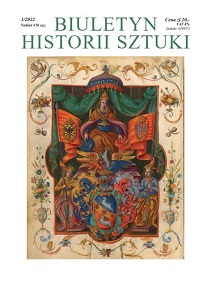Malarskie „zdjęcie kraju” jako pejzaż polityczny? Wycieczki w poszukiwaniu rodzimości w niemieckojęzycznych krajach epoki oświecenia
Painterly ‘Rendering of the Country as Political Landscape? Trips in search of Native Character in German-speaking Countries of the Era of the Enlightenment
Author(s): Andrzej PieńkosSubject(s): Visual Arts, 17th Century, 18th Century, Sociology of Art, History of Art
Published by: Instytut Sztuki Polskiej Akademii Nauk
Keywords: landscape painting; nation; geographical discoveries; Enlightenment: plein-air studies; visual propaganda; political art;
Summary/Abstract: The research into depicting landscape in the Enlightenment has developed dynamically as of the 1970s. The major focus is, however, on revolutionary in their impact open-air studies executed in Italy by artists arriving from behind the Alps in the late 18th century and around 1800. Less attention is paid to the views of the Alps and the visual documentation of exploration trips. Interestingly, the least known and understood is the phenomenon of exploring one's own country, the native land. The paper points to the examples of this tendency from e.g., France, Scandinavia, and Poland, nonetheless focusing on German-speaking countries. Definite examples of rendering native elements serve for the reflection on the concept of political landscape. Questions are posed on the essential motivations for the earliest visual depictions of a country or of a state: some initiatives came directly from rulers, in the majority of the cases, however, the motivation was a combination of various inspirations: political, literary, artistic, and mercantile. A factor, easily discernible, present in the majority of the analysed phenomena from the 18th century, is the attempt to imitate Dutch models from the 17th century.
Journal: Biuletyn Historii Sztuki
- Issue Year: 84/2022
- Issue No: 1
- Page Range: 107-131
- Page Count: 25
- Language: Polish

